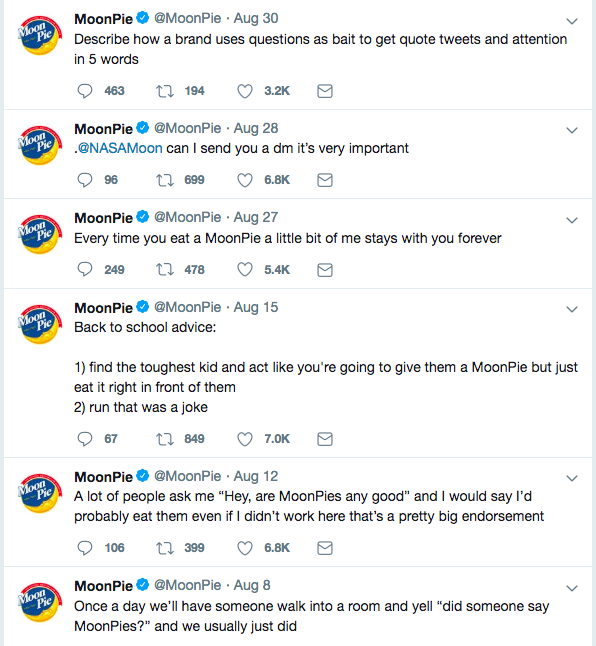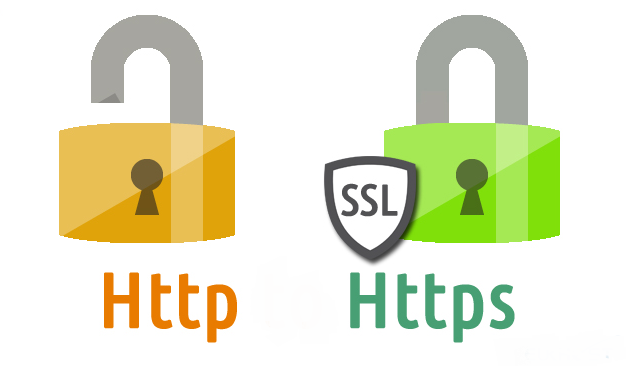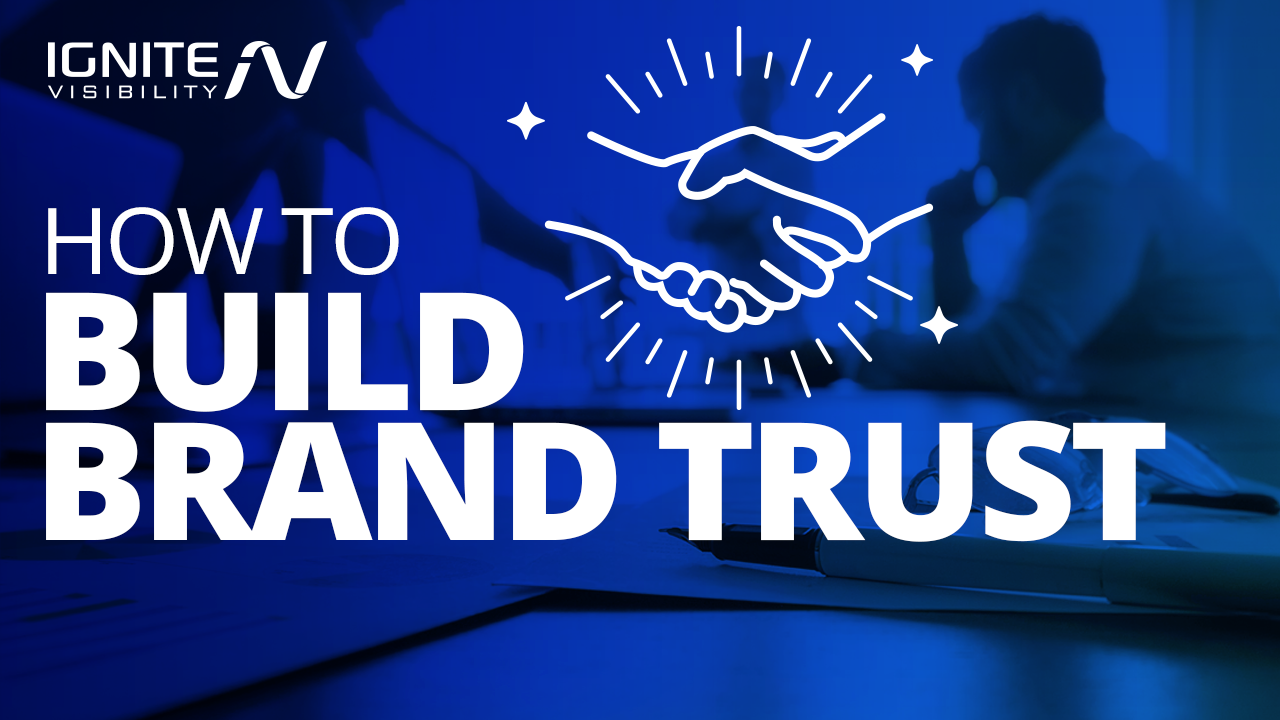Want to build a brand your customer’s trust?
Then listen up; I’m about to walk you through way seven ways you can help solidify brand trust– and build a strong customer base in the process.
What You’ll Learn:
- Why is brand trust important
- Start with a clear value proposition
- Focus on content
- Be authentic in your messaging
- Use social proof and reviews
- Share trustworthy links
- Embody values that set you apart
- Switch to HTTPS and use trust badges
- Be transparent and over-deliver on promises
Build Trust in Your Brand
Because believe it or not, we’re in a bit of a crisis.
A brand trust crisis, that is.
According to the 2018 Edelman Trust Barometer, only 48% of the general population in the United States trusts businesses, falling from 58% last year and with a general trend moving downward over the past decade.
This is pretty bad news for brands, as it is proven to be a pretty big deal when it comes to customer acquisition and loyalty.
In a recent study, PwC found that more than one in three ranked ‘trust in brand’ as among their top three reasons that influence their decision to shop at a particular retailer, other than price.
This has fallen significantly. Just a decade ago, that number would have looked pretty different.
But that was before when consumers didn’t have hundreds of brands competing in the same space to choose from and the internet to inform their decisions.
And that was before brands were all-in on the content trend, becoming not just merchants but trusted sources of information.
These days, consumers turn to brands to keep them up-to-date and informed, whether it’s through blog content, social media interactions or a YouTube channel.
That’s because they need proof.
How to Build Trust in Your Brand
Your consumers need a reason to choose your brand over the who-knows-how-many others in your space, and a big name alone is no longer enough to ensure a strong customer base.
Don’t believe me? Just take a look at Facebook.
Since the Cambridge Analytica scandal broke, consumer confidence in the brand has plummeted, and the social giant reported a 20% decrease in shares last quarter.
That, and the growing skepticism around “fake news,” has led to many wary would-be customers – and brands scrambling to prove they can live up to their promises.
Sadly, 62% of Americans see corporations as corrupt. This is a major concern among consumers.
But, while trust does take time to build, brands can no longer afford the often lengthy wait times that it takes to spread organically.
Instead, they need to adopt a proactive strategy to secure and solidify assurance among their customers early on.
Here are a few ideas to get you started.
1.Start With a Clear Value Proposition
Your value proposition defines who you are as a brand.
It represents your purpose and communicates to your customers what your brand can do for them.
And if it’s not well-thought-out, well-researched, or fully understood by your audience, it could damage your relationship and ability to build assurance from the get-go.
An interesting study identifies two primary components of trust: competence and benevolence.
Competence represents your brand’s ability to realize and deliver on promises, and benevolence represents the intentions and motives beneficial to consumers or factors that matter to them.
Both of those should be embodied in your value proposition: what matters most to your customers and how they should buy from you.
But despite the important role that value propositions play, research from Quicksprout shows that more than half of businesses – 54% – do nothing to optimize their value propositions.
Think of it this way: your value proposition is the first promise you make to your customers.
Don’t break it.
Instead, put real effort into the creation and optimization of your value proposition.
Think about the specific challenges your product or service is designed to meet, and how you can express that (clearly and concisely) to your target audience.
Take a look at Starbucks, for example. The coffee giant offers a loyalty program for regular customers to build points and get rewarded.
Not only does the company allow customers to earn points, but they also give they coffee-addicted consumers opportunities to rake in extra points to reach the reward faster.
This shows the customer that they are valued. They are literally being rewarded for getting their morning caffeine fix at Starbucks.
Loyalty programs like this will most certainly help to keep customers coming back.
2. Build Trust in Your Brand by Focusing on Content
Learning how to build brand trust is a key element to the success of your business.
Creating and promoting high-quality, relevant content isn’t exactly a new concept in marketing.
Using it to build influence, however, is a newer focus.
Content can do that in a couple of ways.
First, if you can establish yourself as a thought leader and provide your readers with content that addresses their problems and gives them real tips, strategies, and solutions, you can solidify yourself as a valuable resource.
Once they’re convinced you do, in fact, know what you’re talking about, they’ll feel a whole lot more confident buying – or even thinking about buying – from your brand.
But here’s the thing: that content can’t come from a sales or promotional place.
It needs to be authentic and educational, with the focus entirely on helping the user, not selling your services.
The cool thing is, content like this is incredibly effective.
A recent study released by Conductor found that:
- 65% of consumers feel a brand is trustworthy/positive immediately after they read a piece of educational content from that brand.
- A week after reading a piece of educational content from a brand, 74.49% of consumers identified the brand as “positive,” an 8% increase since initially reading the content.
- A week after reading a piece of educational content from a brand, 73.3% of consumers identified the brand as “trustworthy,” a 9% increase since initially reading the content.
Another thing great thing content marketing does? It solidifies your brand’s identity.
These days, consumers want to know who you are as a brand. They want to know the faces and voices behind the brand.
And the best way to be heard? Is through your content.
A consistent identity is crucial to building brand trust. Readers should be easily able to recognize you through your content – whether it’s a signature tone, intro, or video sign off.
That means creating consistent messaging across all channels that reinforce your core values.
When in doubt, make sure your content can check all the following boxes:
- Does your content reflect your company’s core values?
- Is your communication consistent? Do all channels sound like you?
- Do your customers know what your values are? How do you know?
3. Go Back to Basics of Brand Trust (Think Authenticity)
So, what is brand trust really?
Remember the early days of social media?
Back when it was just Facebook (or, if you can remember that far back, Myspace.)
It was a simple time when real messages were exchanged between real people, where actual conversations took place in the ever-evolving text shorthand.
That was back when the few brands that broke in on the scene were the trailblazers, using social media to put the human back in business.
Naturally, social media has evolved, and brands continued to battle out to be the “best.”
Usually, that meant including the most polished images and well-worded updates.
But brands lost something in the transition: their authenticity.
They lost the ‘human’ element of social media, focusing on over-produced creatives and messaging and building an (overly) politically correct brand voice.
But the thing is, that’s not what resonates with people.
Shorthand does. A missed comma here or there does. A video from your mobile phone as you’re suddenly hit with inspiration while on a grocery run does.
It’s these seemingly small things that showcase authenticity and build trust.
Take a look at Moonpie’s Twitter.

Be authentic to build trust. Example: Moonpie’s Twitter
First, it’s funny, and you can actually imagine someone sending out an idea that just popped into their head – not one that they’ve been curating for a few weeks.
Grammar isn’t the focus. Natural, conversational language is.
Now, in case you’re thinking this isn’t super important, let me just tell you: it is.
A survey by Social Media Today revealed that 86% of people say authenticity is important when deciding what brands they like and support and – get this – 90% of Millennials say brand authenticity is important, proving that younger consumers prefer ‘real and organic’ over ‘perfect and packaged’.
See how important building brand trust is?
Pro tip: Try telling your brand’s story.
Origin stories are all the rage these days (Marvel movies, anyone?)
People love to see where something began and how it’s grown, and that’s true too of your brand.
Think of a brand like Ford. It’s synonymous with founder Henry Ford, and has found success not just because it’s a solid car manufacturer, but because people relate to the home-grown, all-American story of the rise of Ford.
While your business may not have that long of a history, share what you can. Get your company founder to tell the story of how and why they started the business and any major hurdles or accomplishments along the way.
It’s another way to inject the human element into your brand, and your audience will feel that much more connected because of it. When trying to figure out how to build authenticity in your brand, being relatable is crucial.
4. Use Social Proof and Reviews to Build Brand Trust
Now, let’s take a look at some more examples to clear things up.
Say you’re planning a dinner out and looking for one of the best restaurants in town.
Do you choose the restaurant with a steady waiting line and reservation list? Or the one with more empty tables than full ones?
Probably the first.
Even though it’s slightly less convenient, you choose that one because it’s level of business is, generally, a good indicator that it’s a well-liked, quality place.
We call it social proof.
As psychologist and social proof writer Robert Cialdini puts it, “we view a behavior as more correct in a given situation to the degree that we see others performing it.”
See? The more people eating at a restaurant, the better we assume it is.
The whole idea of social proof goes back to building authenticity and brand trust.
And it’s a big deal. In fact, 60% of consumers said user-generated content (UGC) is the most authentic form of content – 3X more authentic than brand-created content.
There are plenty of ways brands can use social proof, including:
- Displaying follower counts, subscribers, fans, etc.
- Collecting reviews and testimonials
- Collecting user-generated content
- Working with an influencer
But beware, collecting social proof can seem like an uphill battle, especially if you’re new to the biz.
So, how can you do this to build your brand?
Start small. Get yourself certified in whatever suits your niche, whether it’s Google Analytics, Google Ads, etc. and display the badge prominently on your website.
Secure some guest blogging opportunities. Once you get the ball rolling, you can begin to add some bigger-name publications to your rotation, and of course, display a “featured in” section on your homepage.

Build up social proof with “featured in” section
And of course, have a strategy for collecting reviews built into your marketing plan from day one.
Stats suggest that 61% of consumers read reviews before they complete a purchase. They look for a reason to trust your brand, so give it to them.
Attach surveys to your emails with clients, and ask them to submit them (they can even do this anonymously). Use software designed to automate the process for you, or reach out individually to loyal clients and ask them for a testimonial.
Showing new potential customers that you have solid authority among your existing customers can significantly increase sales and overall growth.
5. Embody Values that Set You Apart
Now let’s look at some examples that embody values.
When you think of major airlines that you actually like, what comes to mind?
I’m willing to bet Southwest is at the top of the list.
Southwest burst onto the scene and promptly shook up the norm – no assigned seating, low fares, and friendly, fun employees.
And people couldn’t get enough of it.
Why? Because from the beginning, Southwest forged its own path.
https://youtu.be/TPOeNjnTlLM
As airline prices were rising, they offered consistently lower prices, without cutting back on accommodations that passengers need to feel comfortable during flights.
When everyone else relied on assigned seating, Southwest let you choose your own.
And when airlines started charging for checked baggage, Southwest let your bags fly for free.
This ability to defy the norm set them apart, and their willingness to use policies that benefited customers – and not necessarily their business – made them more likable, and yes, trustworthy.
The moral of the story? Don’t be afraid to do something different. And beyond that, don’t be afraid to do things just for your customers.
Give value to them, don’t just try to get it out of them.
So, when every other restaurant is charging an extra dollar to add chicken to an entree, don’t. Or when every other company charges an initial fee, offer a free consultation.
And remember, little touches like that go a long way in building strong brand ambassadors and brand trust.
6. Share Trustworthy Links
Your users and customers aren’t the only ones who play a part in building brand trust. Google ranks websites and their content by the quality and authority of the information they share.
This means that investing time and strategies to acquire trustworthy links, would do a great deal in building that desired brand trust.
Having trustworthy links will connect your brand and business with the online world. Refer to fact-driven sources in places like your social media posts and blog articles.
7. Switch to HTTPS and Use Trust Badges
This one’s a little more straightforward.
As we discussed, the consumer’s faith in the safety of their information is a big deal right now.
With continuous data breaches and measures like the GDPR coming front and center, it’s imperative that you do everything you can to make users feel that their information is protected.
Seriously – even if you’re only asking for an email, and especially if your site takes sensitive info like payment information – be over-prepared.
The best thing you can do is make sure you’ve switched over to HTTPS.
In a recent PwC global study, respondents were asked how they reduce the risk of online security issues and fraud. More than half said they only use credible and legitimate websites (57%) or choose providers they trust when making payments (51%).
Making the switch will give you the green secure lock in the URL field (rather than the orange, unlocked symbol) and give users that much more incentive to use your site. It helps users feel safe and really solidifies your brand trust.

Switch to HTTPS to build trustworthiness
Pro tip: If you do accept payments, go the extra mile and switch to HSTS (more on that here).
Another way to promote trust is to add trust seals to your site.
These are proven to increase conversions, and ConversionXL has a great article on which badges work best for different audiences.
Once you’ve decided on a badge, it’s generally a process of choosing the plan you want, letting them authenticate your website, and installing the badge on your checkout page (or wherever you need it.)
Taking the proper steps to ensure customer security can only help your brand.
8. Be Transparent and Over-Deliver on Your Promises to Build Brand Trust
This one may seem a bit more like marketing 101, so I’ll keep it short and sweet.
Bottom line: Deliver.
It starts with your value proposition. Those benefits you mentioned? Deliver them.
That PPC ad you ran advertising a low-cost solution? Deliver it. Send them straight to a dedicated landing page, and don’t make them hunt to find what was promised to them.
Staying consistent helps build relationships among customers.
If you promise in-person quarterly meetings, weekly phone calls, or daily updates: deliver.
Treat your customers like VIPs. Go above and beyond to keep them happy and gain their trust.
Satisfied customers are loyal customers. Not only will they keep coming back, but they will probably tell their friends about your business.
Strong brand trust can increase your referral/word-of-mouth rate, which is something many businesses have forgotten about since the dawn of the Digital Age.
People talk. You want your customers to recommend your company or services because they trust that your brand will deliver.
And don’t, in any way, be misleading. This will crush your reputation.
For example, if you’re advertising a free product, don’t surprise your customers with hidden fees along the way.
Similarly, if you plan to increase your prices, give existing customers fair warning. Explain your reasoning and their value to you as a customer.
Chances are, these are all adults. So treat them like it and make sure they’re informed (this is the transparency principle, and it’s big right now – just look at how Buffer’s used it to promote their core values.)

Be transparent with your customers, like Buffer
Here’s another way to build authority: if something goes wrong, own it. Don’t try to pass the blame onto someone else, especially not onto your customers.
If you’re preparing a monthly report and the numbers aren’t what you were hoping for, don’t dodge them. Show them to your client and explain what happened or could have gone wrong.
Your customers will respect your honesty, and hopefully your attempts to right any wrongs.
Even if it’s a blow to your ego, it will improve your brand trust in the long run because people will associate your brand with honesty.
Similarly, always offer exceptional customer service.
If a customer has a complaint, don’t brush them off. Address the situation professionally and fix the problem.
Some customer complaints can be remedied quickly, while others might take some time to fix. However, if you are seen as making solid efforts to keep your clients happy, this will boost your brand significantly.
Wrapping Up
There’s no denying the huge impact customers’ trust can have on your business.
It can make or break your business.
Make it a priority. Your customers will see the difference and so will you.
